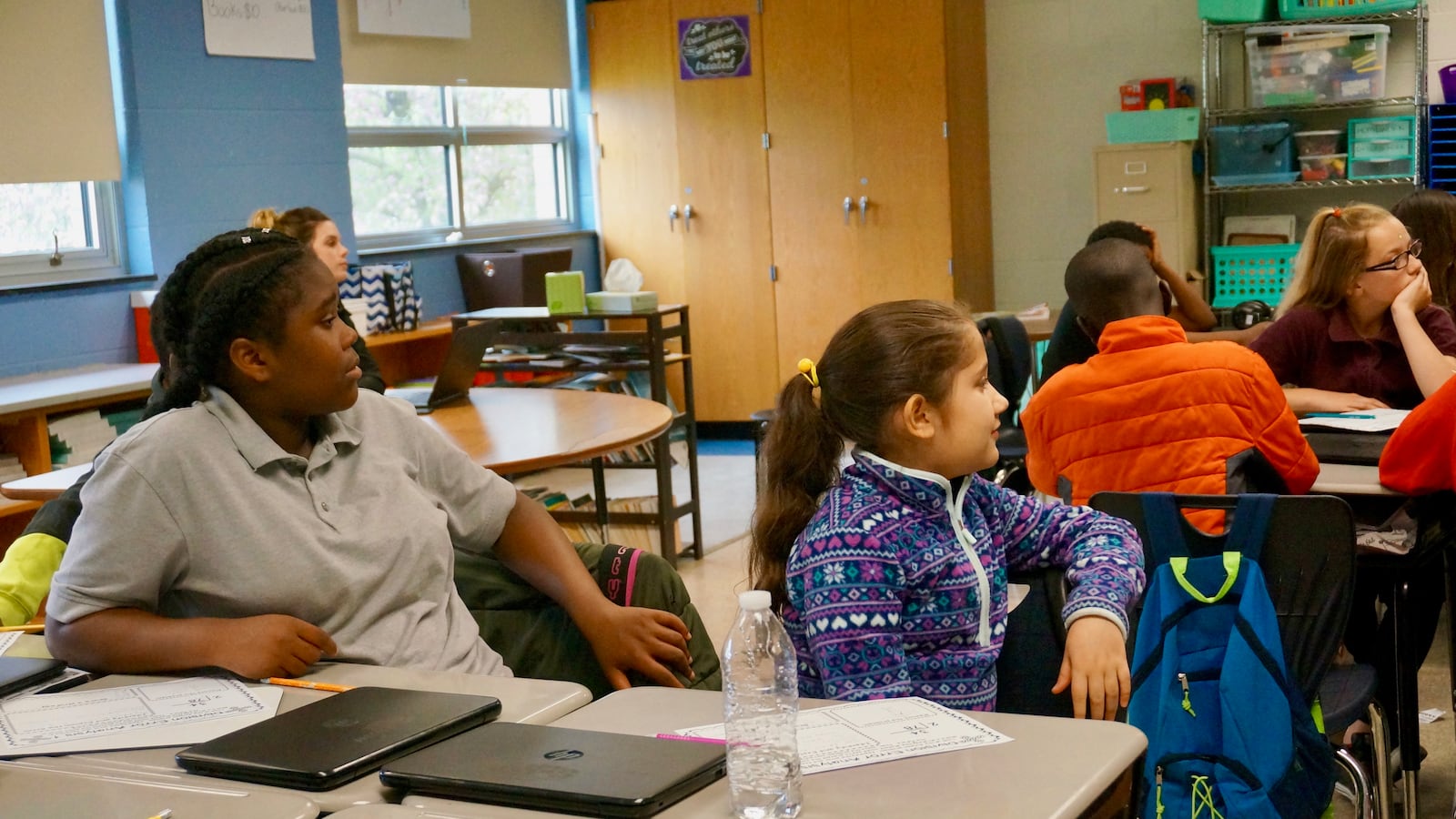At campuses across Indianapolis Public Schools, principals are grappling with a painful prospect: cutting hundreds of thousands of dollars from their school budgets. And that may be just the beginning.
The district is looking to cut about $21 million from its $269 million general fund budget for 2018-19, including about $8.9 million that will come from budgets for schools and certified staff such as teachers, according to a preliminary budget document. Officials declined to give school-by-school breakdowns until they are finalized later this summer.
The district initially planned to fill its budget gap by asking voters for nearly $1 billion in extra funding in May, but after the proposal received little support, the board first shrunk and then delayed the request. The cuts that begin next year could continue if the state’s largest district isn’t able to find other savings or win voter support for a referendum to increase taxes and school funding in November.
“We have the hope of a referendum,” said Weston Young, the district’s chief financial manager.
Chalkbeat has the details on what types of schools are expected to lose the most, what schools might cut, and what this means for the future of the district.
Big schools — including high schools — are taking the brunt of the cuts.
When it comes to cutting spending, large schools are carrying more of the burden, according to the preliminary documents. That includes middle and high schools, as well as some elementary schools. At some of the district’s smallest campuses, however, officials say budgets are already too lean for significant cuts.
Indianapolis Public Schools sends money to schools using a formula known as student-based allocation, which gives them funding based on how many students they enroll and student needs. But every school also has a baseline amount of money district officials believe they need to operate.
Small schools that serve wide grade spans, which might only have one class at each grade level, often get extra money to be sure they reach the minimum. In contrast, large campuses typically get enough from the per student formula to be above baseline. On a basic level, the district budget is based around the idea that it costs less per child to educate students in large, efficient schools.
Because of that approach, campuses that were already at minimum funding levels won’t see significant cuts, Young said. On the flip side, however, bigger campuses are shouldering a larger share of the cuts.
That could be bad news for the four high schools that will remain open in the fall. The schools will be among the largest campuses in the district, and they are expected to face significant cuts.
Last month, Superintendent Lewis Ferebee told Chalkbeat that cuts would not damage the effort to revamp high schools because, in addition to baseline funding, the schools will have donations from private partners such as Salesforce.
“Obviously, we won’t have all the resources that we’d like to have,” he said, “but we will be in a good position come August of 2018.”
Magnet schools and career and technical education get extra money — and extra cuts.
On top of their regular budgets, choice programs, such as Montessori, International Baccalaureate, and career and technical education, receive millions of extra dollars each year. That spending is also on the chopping block as the district cuts costs.
But because the district had already planned spending on those programs and some areas are easier to reduce than others, cuts won’t be spread evenly, said Aisha Humphries, director of budget and strategy for the district. In Montessori schools, for example, instructional assistants are integral to the model, she said. In order to cut that, the district would have to change the school model.
“When you do budget cuts, it may be that we want to cut equally and make everybody feel the pain equally,” Humphries said, “but you may not be able to do that.”
But there are other areas where the district can more easily cut back, Humphries said, such as by reducing the number of foreign languages offered in middle school.
Schools are giving up technology, teachers, and other staff.
As the district cuts budgets, principals ultimately decide what painful trade offs to make. Under the new budgeting approach the district rolled out this year, principals are given a set amount of money, and they have control over how they spend most it. If a principal wants to make class sizes slightly larger to pay for a school social worker, for example, they can. When it comes to budget cuts, the approach is the same.
“They are still in the driver’s seat,” Young said.
When schools got budgets earlier this year, they were built on the assumption that the district would win the May referendum. But principals knew that additional funding might not come through, and some planned for potential cuts when they created their budgets, Young said.
When principal Jeremy Baugh learned School 107 is expected to lose about $230,000 next year, he already had some potential cuts in mind. The school will cut back on new technology, instructional supplies, and professional development. Baugh also won’t go through with his plan to hire two new educators.
School 107, which enrolls just over 600 students, is expected to have one of the larger budget cuts in the district. But in part because the school is growing and will get more money for those new students, he doesn’t expect to cut current staff.
“We didn’t have to make significant cuts that were impacting staff right now,” Baugh said. “So we felt pretty lucky.”

